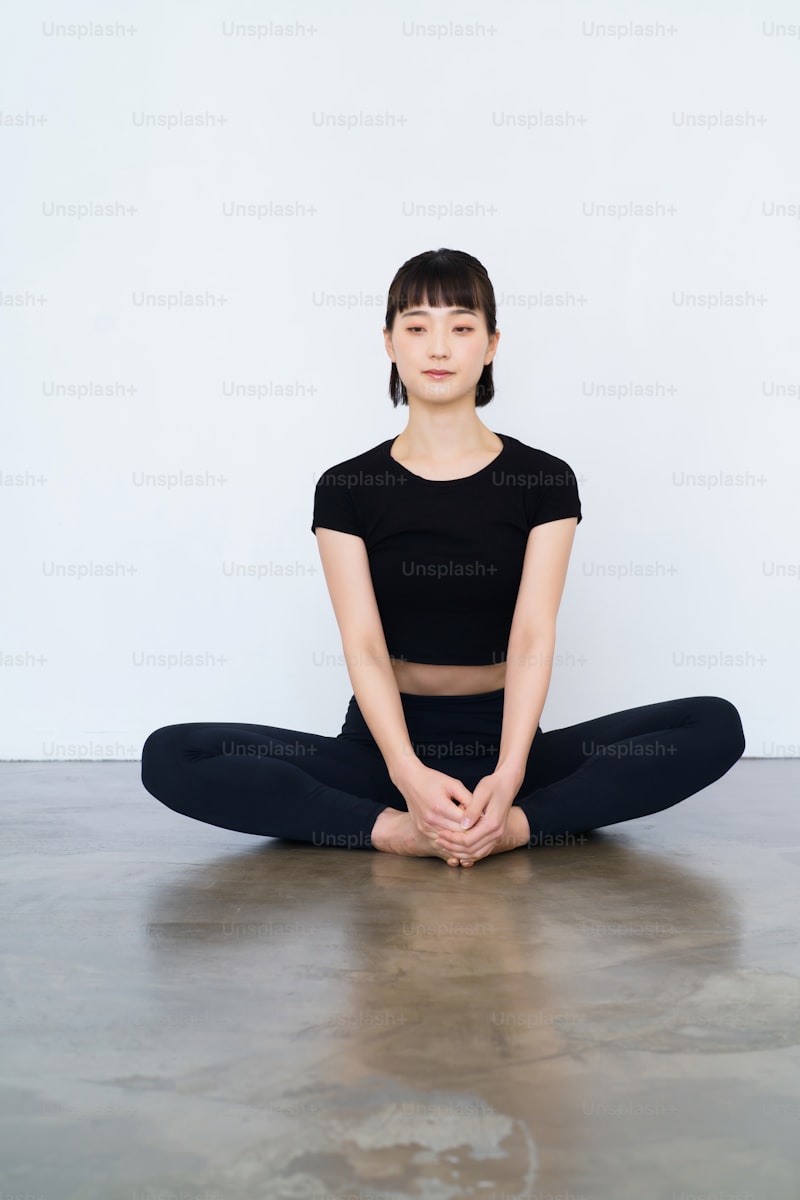Yoga isn’t just about striking poses; it’s a holistic practice that integrates breathing exercises, meditation, and mindful movement. These elements work together to create a serene space within yourself, where you can explore and heal your emotions.
One of the most profound ways yoga supports emotional health is through deep breathing techniques. By focusing on your breath, you cultivate mindfulness and anchor yourself in the present moment. This practice helps to alleviate anxiety and promote relaxation, fostering a sense of calm that extends beyond the yoga mat.
Meditation plays a pivotal role in emotional well-being during yoga practice. Taking time to quiet the mind allows you to observe your thoughts without judgment. This awareness helps you manage stress more effectively and cultivate a positive outlook on life.
Yoga also encourages physical movement that is gentle yet invigorating. As you flow through various poses, you release tension stored in the body. This release can be profoundly liberating, often accompanied by a sense of lightness and renewed energy.
Moreover, yoga teaches you to be kind to yourself. It’s not about achieving perfection in poses, but rather about honoring your body’s capabilities and limitations in each moment. This compassionate approach fosters self-acceptance and resilience, which are crucial aspects of emotional well-being.
In essence, yoga is a journey inward—a journey toward self-discovery and emotional balance. Whether you’re dealing with daily stresses or deeper emotional wounds, the practice of yoga offers a pathway to healing. By integrating breath, meditation, and mindful movement, you can cultivate a greater sense of peace, joy, and emotional resilience in your life. Ready to embark on this transformative journey? Roll out your yoga mat and let’s begin.
Unlocking Serenity: Harnessing Yoga Poses for Emotional Balance
Yoga, often seen as a physical practice, extends far beyond the realm of mere exercise. Each pose, from the grounding Mountain Pose to the tranquil Child’s Pose, carries profound emotional benefits. Picture yourself standing tall in Mountain Pose, feeling rooted like a sturdy tree. This pose not only strengthens your legs but also instills a sense of stability and confidence, grounding you in the present moment.
For moments when stress creeps in like an unwelcome guest, the soothing effects of Child’s Pose can work wonders. Kneeling on the mat, gently folding forward with arms outstretched, you create a safe haven for introspection and relaxation. It’s akin to wrapping yourself in a comforting embrace, allowing tensions to melt away and a calmness to settle in.
Ever felt a surge of frustration or anger? Channel that energy into the empowering Warrior Pose. As you stretch into this strong stance, you’re not just engaging muscles but also cultivating resilience and determination. The warrior within emerges, poised and ready to face life’s challenges with courage and grace.
Balancing poses like Tree Pose teach us patience and focus. Standing on one leg, arms stretched overhead like branches, you learn to find stability amidst movement. It’s a reminder that emotional balance is about adjusting to life’s ebbs and flows without losing your center.
Yoga isn’t about being perfect; it’s about progress. Each time you flow through these poses, you’re not just exercising your body but nurturing your emotional well-being. By connecting breath with movement, you create a symphony of peace within, where worries fade and clarity emerges.
Mindfulness in Motion: Yoga’s Role in Managing Emotional Well-being
Yoga’s impact on emotional health is profound. It’s not just about stretching or striking poses; it’s about tuning into your body and mind, creating a harmony that resonates deep within. Imagine each pose as a brushstroke on a canvas, painting a picture of inner peace and serenity. Through mindful movement and controlled breathing, yoga helps to anchor us in the present moment, easing stress and anxiety that can cloud our emotional landscape.
At its core, yoga teaches us to embrace our emotions without judgment. It invites us to explore the vast landscape of our feelings, acknowledging them with kindness and compassion. In a world where emotions can sometimes overwhelm, yoga provides a sanctuary – a space where we can observe our thoughts and feelings from a place of calm detachment.
The beauty of yoga lies in its adaptability. Whether you’re a beginner or a seasoned practitioner, there’s a practice suited to your needs. From gentle flows that soothe the soul to dynamic sequences that invigorate the spirit, yoga offers a spectrum of techniques to help manage emotional well-being.
Beyond the physical benefits of increased flexibility and strength, yoga cultivates resilience in the face of life’s challenges. It teaches us to breathe through discomfort, both on and off the mat, fostering a mindset that is steady and composed. Like a tree rooted deeply in the earth, yoga grounds us, allowing us to navigate the highs and lows of our emotional terrain with grace.
In essence, yoga is more than just a workout – it’s a pathway to emotional freedom. By integrating mindfulness into movement, it empowers us to cultivate a deeper connection with ourselves and the world around us. So, whether you roll out your mat at dawn or unwind with a gentle flow before bed, remember that each breath and each pose is a step towards greater emotional well-being.
Embrace Peace: Yoga Techniques for Stress Relief and Emotional Stability

Yoga isn’t just about twisting your body into complex poses; it’s a holistic approach that combines physical postures, breathing exercises, and meditation. These elements work together synergistically to create a profound impact on your mental and emotional well-being.
Imagine this: you start your day with a few gentle yoga stretches and conscious breathing. As you move through each pose, you feel the tension melting away from your muscles. This simple act of stretching not only increases blood flow but also releases endorphins—your body’s natural feel-good chemicals.
One of the key components of yoga is its ability to regulate the stress response. Through deep breathing techniques like pranayama, you learn to control your breath, which in turn helps to calm the mind. As you practice regularly, you’ll notice that stressful situations seem less overwhelming. Your mind becomes clearer, and you’re better equipped to handle whatever comes your way.
Moreover, yoga encourages mindfulness—a state of present-moment awareness without judgment. By focusing on the sensations in your body as you move through each pose, you cultivate a sense of inner peace. This mindfulness extends beyond your yoga mat and into your daily life, allowing you to respond to challenges with clarity and composure.
Incorporating yoga into your routine doesn’t require hours of practice each day. Even dedicating a few minutes to simple yoga techniques can make a world of difference. Whether you’re dealing with work pressures, relationship issues, or simply the demands of daily life, yoga provides a sanctuary—a space where you can reconnect with yourself and find inner calm.
From Anxiety to Tranquility: The Healing Power of Yoga Practices
Yoga isn’t just about bending into pretzel-like poses; it’s a holistic approach to wellness that combines physical postures, breathing exercises, and meditation. These elements work synergistically to alleviate anxiety by calming the nervous system and reducing stress hormones like cortisol. Imagine it as a reset button for your mind, allowing you to let go of worries and focus on the present moment.
The beauty of yoga lies in its adaptability. Whether you’re a beginner or a seasoned practitioner, there’s a practice suited for every level. Starting with simple breathing exercises can immediately induce a sense of calmness, helping you to regulate your breath and slow down racing thoughts. As you progress, incorporating gentle yoga poses promotes flexibility and strength while encouraging mindfulness—a state where worries fade into the background.
One of the key reasons yoga is so effective in reducing anxiety is its emphasis on mindfulness and self-awareness. By tuning into your body’s sensations and observing your thoughts without judgment, you cultivate a greater sense of inner peace and acceptance. This mindful awareness extends beyond the yoga mat, influencing how you respond to stressors in daily life.
Think of yoga as your personal sanctuary amidst the chaos—a place where you can find refuge from the demands of a busy world. Just as each pose flows into the next seamlessly, yoga practice teaches you to navigate life’s challenges with grace and resilience. It’s not about perfection but rather about progress and the journey towards inner harmony.
Incorporating yoga into your routine doesn’t require hours of dedication each day. Even a few minutes of mindful breathing or a short yoga sequence can make a significant difference in how you feel. The key is consistency and intention—a commitment to nurturing your mental and physical well-being through gentle, purposeful movement.
Yoga As Therapy: Strengthening Emotional Resilience Through Daily Practice

In today’s fast-paced world, stress and anxiety seem to lurk around every corner. Yoga, however, offers a sanctuary—a space where you can reconnect with yourself and cultivate emotional resilience. Through daily practice, yoga becomes more than just a physical exercise; it becomes a powerful therapy for the mind and soul.
The practice of yoga involves mindfulness and awareness of the present moment. As you flow through each pose, focusing on your breath, you gradually learn to let go of negative emotions and thoughts. This mindfulness practice not only calms the mind but also helps in building resilience against stressors that come your way.
One of the key elements of yoga as therapy is its ability to regulate the body’s stress response system. Through deep breathing and gentle movements, yoga stimulates the parasympathetic nervous system, triggering relaxation and reducing the production of stress hormones like cortisol. This physiological shift not only soothes the body but also enhances your capacity to cope with emotional challenges.
Moreover, yoga encourages self-reflection and introspection. By tuning into your body and emotions during practice, you develop a deeper understanding of yourself. This self-awareness is essential for emotional resilience—it allows you to recognize triggers, manage reactions, and cultivate a more balanced perspective on life’s ups and downs.
Think of yoga practice as a daily emotional workout. Just as you build physical strength through consistent exercise, you strengthen your emotional resilience through regular yoga practice. Each session becomes an opportunity to release tensions stored in the body and mind, promoting a sense of calm and equilibrium that extends beyond the yoga mat.
Frequently Asked Questions
What are the benefits of yoga for emotional health
Discover how yoga enhances emotional health through a blend of mindfulness, breathing techniques, and physical postures. Learn about its benefits in reducing stress, promoting relaxation, and fostering a sense of inner peace and emotional balance.
How often should I practice yoga to see emotional health benefits
Discover how frequently you should practice yoga to experience emotional health benefits. Learn about the optimal frequency and its impact on your emotional well-being.
Can yoga help with stress and anxiety
Discover how yoga can effectively alleviate stress and anxiety through a combination of mindful movement, controlled breathing, and relaxation techniques.
Which yoga poses are best for improving emotional well-being
Discover effective yoga poses to enhance emotional well-being. Learn how specific poses like Child’s Pose, Downward Dog, and Bridge Pose can promote relaxation and reduce stress.
Are there specific breathing techniques in yoga for emotional balance
Discover specific breathing techniques in yoga designed to enhance emotional balance. Learn how these techniques can help regulate emotions and promote relaxation, fostering a deeper mind-body connection.


